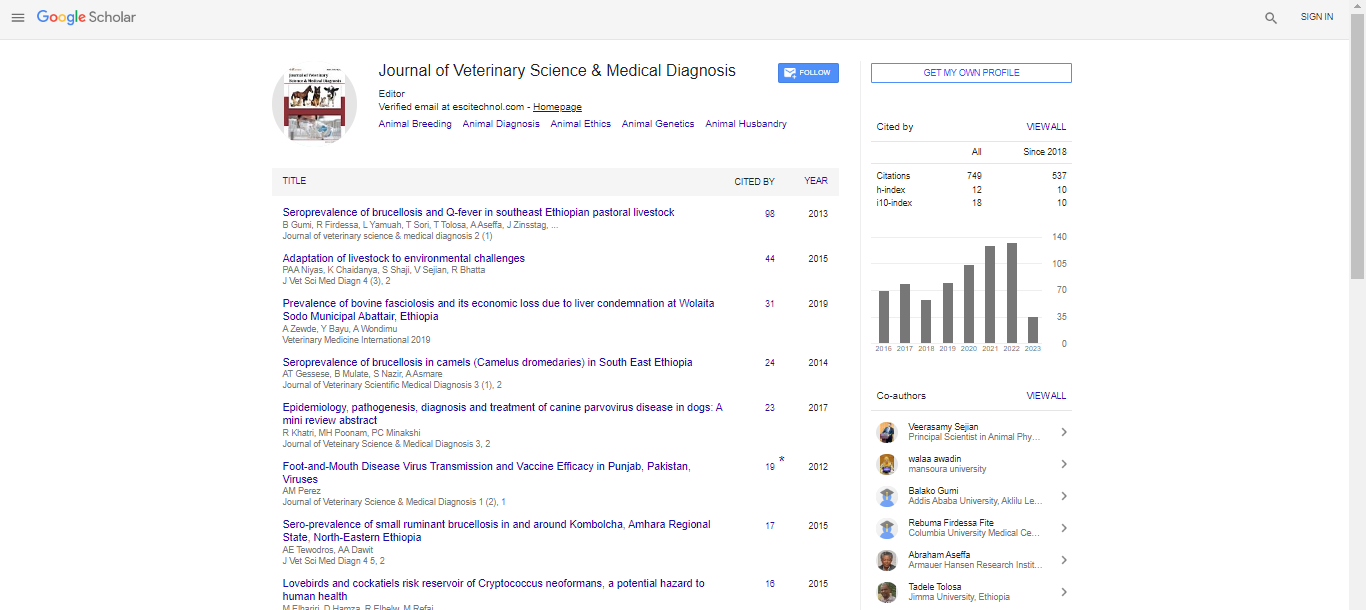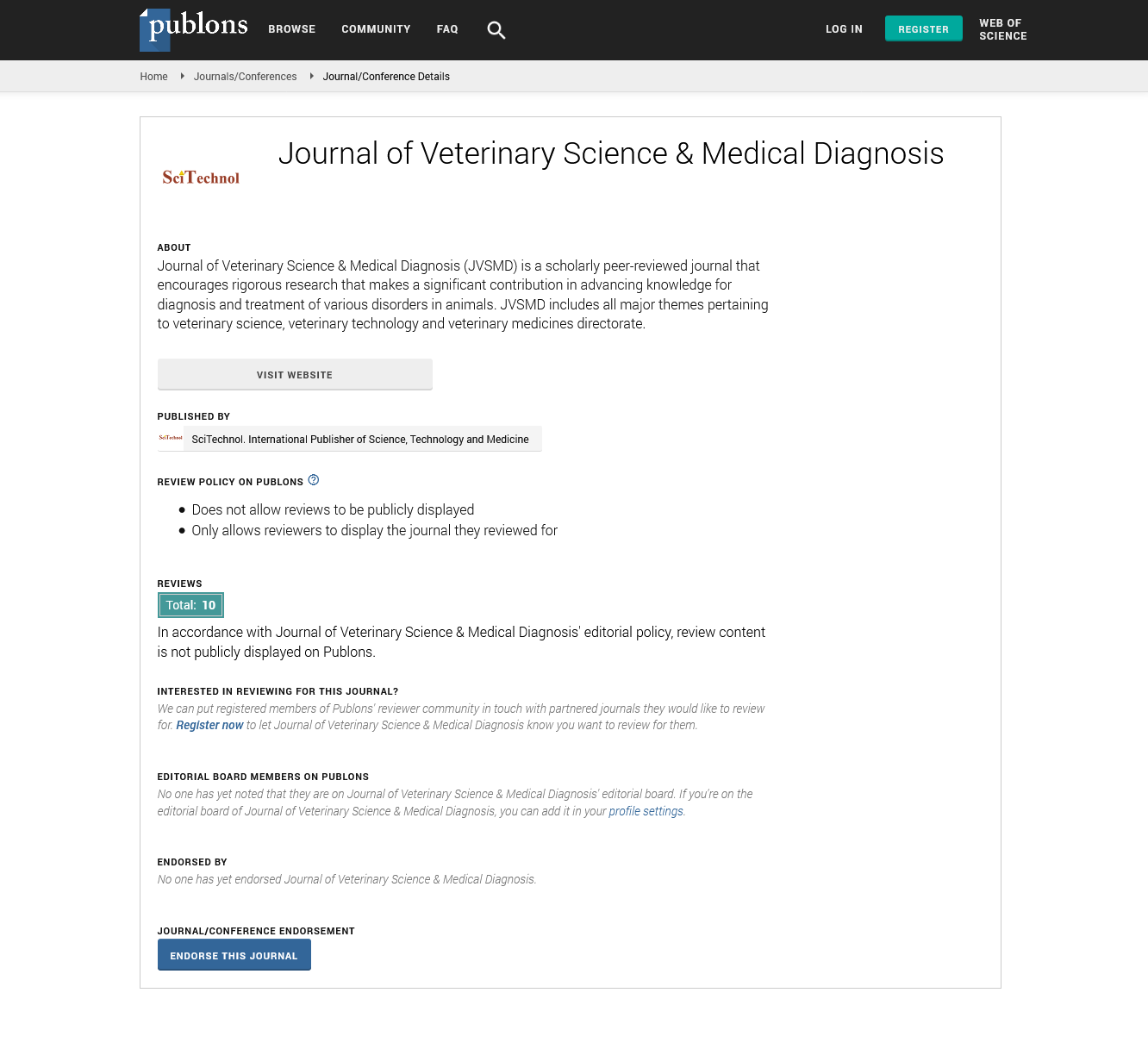Opinion Article, J Vet Sci Med Diagn Vol: 0 Issue: 0
Dairy Farm Cows Consume Of Water for Each Gallon of Milk Production
Yushin Ha*
Department of Biology, College of Science, United Arab Emirates University, 15551, Al-Ain, United Arab Emirates
*Corresponding author: Yushin Ha, Department of Biology, College of Science, United Arab Emirates University, 15551, Al-Ain, United Arab Emirates, Email: ha_yus@gmail.com
Received date: 02 August, 2021; Accepted date: 23 August, 2021; Published date: 30 August, 2021
Introduction
While oxen were domesticated as early as 12,000 years alone as a food supply and as beasts of burden, the earliest proof of victimization domesticated cows for dairy farm production is that the seventh millennium before Christ the first Neolithic era in north-western Anatolia. Husbandry developed elsewhere within the world in ulterior centuries: the sixth millennium before Christ in Japanese Europe, the fifth millennium before Christ in continent, and therefore the fourth millennium before Christ in UK and geographical region. This cooling methodology worked well for smaller dairies, but was fairly inefficient and was unable to fulfill the progressively higher cooling demand of larger milking parlors. Within the mid-1950s direct enlargement refrigeration was initial applied on to the majority milk cooler. This sort of cooling utilizes an evaporator engineered directly into the inner wall of the tank to get rid of heat from the milk. Direct enlargement is in a position to cool down milk at a way quicker rate than early ice bank kind coolers and remains the first methodology for bulk tank cooling these days on tiny to medium-sized operations. In the last century around larger farms specializing in dairy farm alone has emerged. giant scale husbandry is just viable wherever either an oversized quantity of milk is needed for production of additional sturdy dairy farm merchandise like cheese, butter, etc. or there's a considerable market of individuals with cash to shop for milk, however no cows of their own. Within the 1800s von Thune argued that there was a couple of 100-mile radius encompassing a town wherever such recent milk provide was economically viable. The next innovation in automatic milking was the milk pipeline, introduced within the late twentieth century. This uses a permanent milk-return pipe and a second vacuum pipe that encircles the barn or milking parlor on top of the rows of cows, with quick-seal entry ports on top of every cow. By eliminating the requirement for the milk instrumentality, the milking device shrank in size and weight to the purpose wherever it might droop beneath the cow, delayed solely by the intake force of the kine nipples on the cow's mamma. The milk is force up into the milk-return pipe by the vacuum system, and then flows by gravity to the milk house vacuum-breaker that puts the milk within the tank. The pipeline system greatly reduced the physical labor of milking since the farmer now not required holding around large serious buckets of milk from every cow. The pipeline allowed barn length to stay increasing and increasing, however once a degree farmers began to milk the cows in giant teams, filling the barn with half to third of the herd, milking the animals, then evacuation and filling the barn. As herd sizes continued to extend, this evolved into the additional economical milking parlor. Another device that has contributed considerably to take advantage of quality is that the plate device (PHE). This device utilizes variety of specially designed stainless-steel plates with tiny areas between them. Milk is passed between each alternative set of plates with water being passed between the balances of the plates to get rid of heat from the milk. This methodology of cooling will take away giant amounts of warmth from the milk in a {very} very short time, therefore drastically swiftness microorganism growth and thereby up milk quality. Spring water is that the commonest supply of cooling medium for this device. Dairy farm cows consume just about three gallons of water for each gallon of milk production and like to drink slightly heat water as opposition cold spring water. For this reason, PHE's may result in drastically improved milk quality, reduced in operation prices for the dairymen by reducing the refrigeration load on his bulk milk cooler, and inflated milk production by supply the cows with a supply of recent heat water. The first milking machines were an extension of the standard milking pail. The first milk device matches on high of a daily milk pail and Saturday on the ground beneath the cow. Following every cow being milked, the bucket would be drop into a holding tank. These were introduced within the early twentieth century. This developed into the Surge hanging milk. Before milking a cow, an oversized wide animal skin strap referred to as a surcingle was place round the cow, across the cow's lower back. The milk device and assortment tank adorned beneath the cow from the strap. This innovation allowed the cow to man oeuvre around naturally throughout the milking method instead of having to face utterly still over a bucket on the ground
 Spanish
Spanish  Chinese
Chinese  Russian
Russian  German
German  French
French  Japanese
Japanese  Portuguese
Portuguese  Hindi
Hindi 
